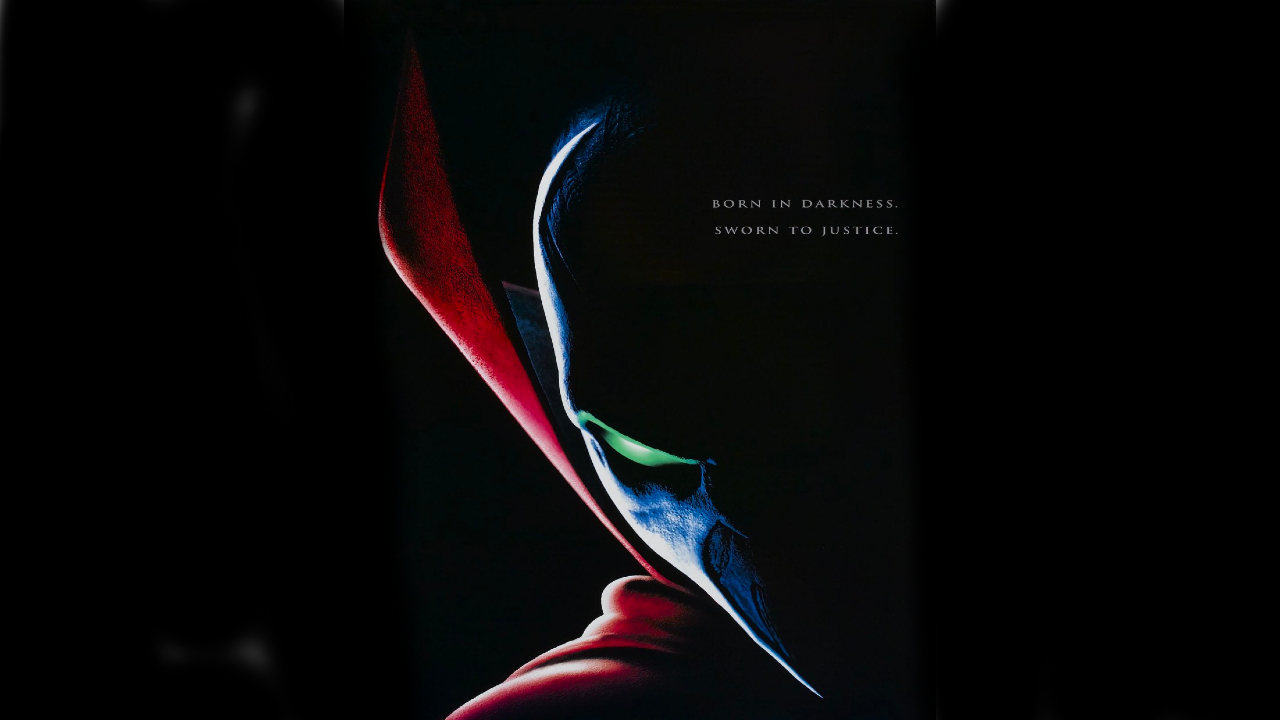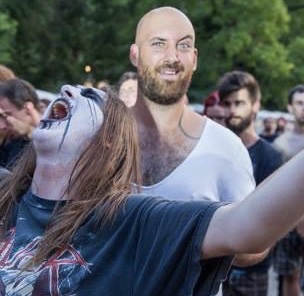Unlike today, back in the 1990s the comic book movie adaptation was still considered something of a risk in Hollywood. In 1989, Tim Burton’s take on Batman had successfully introduced the idea of focusing on the darker, gothic noir side of graphic novels rather than the family-friendly fare it was more associated with. Films such as The Crow, the first Teenage Mutant Ninja Turtles movie and Sam Rami’s Darkman built upon the idea, but by 1997, Burton’s Batman was now in the hands of Joel Schumacher, who binned off the dark aesthetic for George Clooney’s bat-nipples and Arnold Schwarzenegger's one-liners. The Crow: City of Angels had killed the franchise stone dead in 1996, and the Turtles had swapped running in the sewers for dancing with Vanilla Ice. The genre was struggling for relevance and identity. Clearly, the deck was stacked against Spawn.
In 1992, former Spider-Man artist and writer Todd McFarlane had created the horror anti-hero Spawn: the story of Al Simmons, a former marine who is burned to death, sent to hell and accepts a deal to come back to Earth to fight as the leader of hell's army. Over 1.5 million copies of the first edition of the graphic novel were sold, and Hollywood was immediately interested in a film adaptation.
Five years passed without a Spawn film seeing the light of day, though; McFarlane was unable to agree a deal with a studio that satisfied his desire for some level of creative control. Then New Line Pictures, home of the Nightmare On Elm Street franchise, paid him a single dollar for the rights, with the caveat that McFarlane would have creative input and a cut of the merchandising profit.
There were high hopes for the project, with the initial budget of $20m being doubled once the scope and size of the story was reconsidered; the visual effects team, the essential component of making the story work, contained members of the crew that helped Jurassic Park and Terminator 2 wow audiences. One of that team was Mark A.Z. Dippe, who was installed as the project's director, despite his only directorial experience being the video for jazz legend Herbie Hancock’s song Dis Is Da Drum in 1995. It was a risk, and Dippe’s credits in the years since (three straight-to-DVD Garfield movies stand out) suggest he may not have been the wisest choice.
The director may have lacked experience, but the cast was a different story; long time A-lister Martin Sheen and John Leguizamo, scalding hot in Hollywood after his roles in Carlito's Way alongside Al Pacino and Baz Luhrman's Romeo + Juliet, both signed on, but the most interesting and forward-thinking piece of casting was that of Michael Jai White as the lead character. Having previously been known for his portrayal of Mike Tyson in a 1995 HBO special, the former martial arts expert became the first ever person of colour to play the lead role in a comic book movie. 21 years before Black Panther, Jai White was a boundary-breaker, calling the character “the most tragic character I’ve encountered in any cinematic production” in an interview with Spotlight at the time.
They team hoped for a PG-13 from the censors, pitching it at a 13-21 demographic, but had to cut the film dramatically when it was given an R-rating - something which frustrated Dippe. “We had to deal with very arcane and cloaked arguments over what's acceptable for kids,” he told Philly.com in 1997. “It upsets me because the boundaries float very conveniently, depending on who the parties involved are and the way the winds in this country blow.''
But, for many music fans, the most exciting thing about the Spawn project was the inclusion of Happy Waters, the man who put together the groundbreaking original soundtrack for 1993’s Judgment Night, as producer of the film's accompanying album.
In 1993, Waters had struck gold by managing to get a bunch of cutting-edge rock bands to collaborate with the finest hip-hop artists of the era; now he was tasked with doing the same thing with metal and electronic music. It’s a cracking idea, but lightning couldn’t strike twice and Spawn: The Album certainly doesn’t have the same legacy as his work on Judgment Night.
Listening back to it today, the names might be there (Korn, Metallica, Slayer, The Prodigy and Atari Teenage Riot all contribute), but the tunes rarely are. “It was a bit rushed,” The Prodigy’s Liam Howlett told Q magazine in 1997. “I did it in three days, when I usually need a week.”
The highs on the albums are pretty high: Goldie giving a ranting Henry Rollins some dirty drum and bass backing on T-4 Strain; Aussie post-grungers Silverchair and long forgotten UK dance-rock crossover band Vitro on the excellent title-track and Slayer and Atari Teenage Riot going bat shit crazy on No Remorse (I Wanna Die). But we’re pretty sure the world never needed a Mansun and 808 State or Stabbing Westward and Wink collaboration...and we're even more sure after listening back to their efforts today. Still, the record went in at number 7 on the US Billboard Chart and ended up selling over half a million copies in that country alone.
Watching Spawn today, maybe the mixed bag of a soundtrack is actually perfect for the movie itself, as it’s a tonally confusing experience.
The morality tale of a hired killer forced to kill against his will in a bid to regain his family and former life is a decent enough premise, and Jai White inhabits the title character very well. But he’s definitely the stand-out performance. Leguizamo’s deeply annoying Clow is never funny, threatening or fleshed out enough to warrant so much hinging on him, Martin Sheen, as CIA director Jason Wynn, the classic corporate bastard, today looks like a panto Dame version of Leonardo DiCaprio’s Calvin Candy from Django Unchained, while Nicol Williamson sleepwalks through his role as Nicholas Cagliostro like an Obi-wan Kenobi ordered from Wish.com. Nothing, however, has aged worse in Spawn than the clunky CGI effects, which look beyond primitive by today’s standards.
In a fate that befell many comic book adaptations of its era, Spawn doesn’t know whether to be a dark, gritty fantasy, or a goofy, family-friendly romp. Is it Darkman or Dick Tracey? The Crow or Howard The Duck? It doesn’t seem to really know; it just chucks you straight into a world of guns, fire, comedy clowns, devils, death, cute kids and cuddly dogs and asks you to work it all out for yourself. Its score of 34/100 on Metacritic would suggest many agree: Spawn has its heart in the right place, but it’s a right mess.
The film went in at a very respectable number 2 in the box office when released on August 1, 1997. It dropped a place the next week, before slowly drifting away, becoming more forgotten with each passing year.
By 1998 there were already plans for a sequel, but development hell and the general malaise surrounding the first movie has meant that we’re still waiting for it. Perhaps, unsurprisingly, in the current climate of superhero movie dominance, there’s still some desire for another crack at the story. Last year, Broken City writer Brian Tucker was hired by Blumhouse Productions to adapt McFarlane’s script for a potential Spawn reboot. Hollywood heavyweight Jamie Foxx has recently been rumoured to be involved.
Whatever the future holds, for now, we're left with the original. And while we can’t fault the ideas behind Spawn, nor the passion to bring it to the big screen. At best, we can call it a decent-ish effort 25 years ago - but let’s hope that, next time, we get the Spawn movie the character really deserves.

